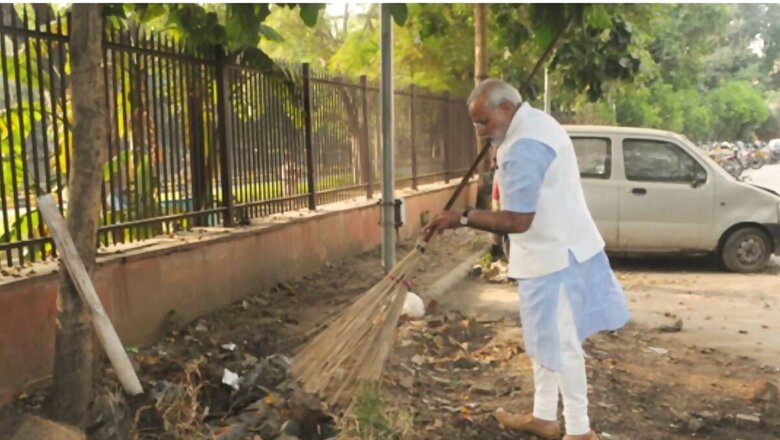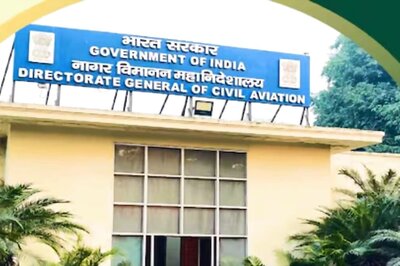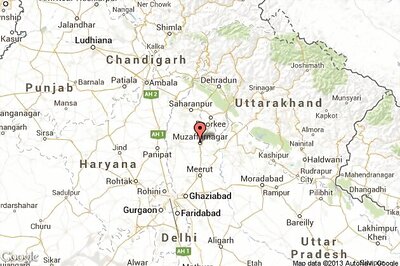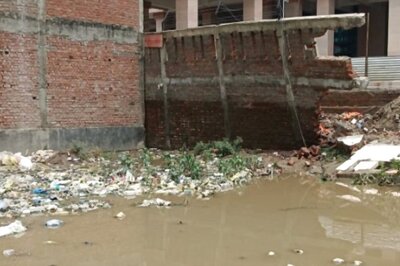
views
What is the one stereotype Indians are sick of? That India is a filthy country where people do not have the remotest idea of the concepts of hygiene and sanitation. While the stereotype has been created due to post-Independence India’s very visible state of uncleanliness, it is now being weaponised by foreigners on social media to increase their engagement.
Anti-India content, apparently, is a big hit abroad. The most common theme, which many foreigners use in their pursuit of more views and likes, is India’s supposed aversion to personal and public hygiene. What such people, and in some cases organised entities tasked with spreading anti-India hate online, conveniently forget is that we are a country on a mission — a mission to clean India and, of course, make it a developed nation by 2047.
Given India’s size and scale, it should be obvious to anyone that the country cannot be cleaned within months. This is an investment on which solid returns will only become manifest after several years, possibly even decades. Patience, therefore, is key. That being said, the Swachh Bharat Mission has already started showing some very positive outcomes.
When Prime Minister Narendra Modi launched the Swachh Bharat Abhiyan on the Gandhi Jayanti of 2014, he did not just start a sanitation campaign, but initiated a profound shift in India’s approach to public health and cleanliness. The campaign marked a pivotal moment where sanitation was no longer seen as a peripheral policy issue but became central to national development.
One of the major achievements of Swachh Bharat has been its ability to effectuate a mindset change among many Indians. Before the campaign, open defecation was rampant in rural India. According to a 2014 baseline survey, about 60 per cent of rural households did not have access to a toilet. Modi emphasised the need for sanitation from the word go, making it a top-down initiative that trickled down to every segment of society.
According to government reports, over 110 million toilets were built between 2014 and 2019, a remarkable infrastructural achievement. The rural sanitation coverage, which stood at 38.7 per cent in 2014, increased to 100 per cent by 2019 as per government data. This massive push to build sanitation infrastructure across the country is estimated to have generated close to 2.5 million jobs. The WHO estimates that 300,000 lives were saved between 2014 and 2019 alone due to improvements in sanitation, primarily through reduced cases of diarrheal diseases and infections related to open defecation.
A 2020 study by the Bill and Melinda Gates Foundation reported that improved sanitation under the Swachh Bharat Abhiyan contributed to a significant drop in stunting among children, as clean environments lead to healthier pregnancies and infancy stages.
More recently, a study in Nature journal has estimated that the Swachh Bharat Mission has averted approximately 60,000-70,000 infant deaths annually since its launch. According to the World Health Organization, by 2025, an additional 677.3 million people in India are expected to benefit from improved health and well-being compared to 2018.
The Swachh Bharat Abhiyan can broadly be divided into two phases. The first, as discussed above, was the creation of millions of toilets and sanitation infrastructure across the country. The second phase, which is now underway, focuses on solid and waste management, especially in urban areas. In 2021, the Swachh Bharat Mission-Urban (SBM-U) 2.0 was launched along with Atal Mission for Rejuvenation and Urban Transformation 2.0. The goal was to make all cities ‘Garbage Free’ by clearing around 2,400 legacy landfill sites in the country by 2026.
Success on this front, however, has been limited. Government data shows major Indian cities dragging their feet and failing to clear over 50 per cent of their landfills. Needless to say, this is one area where the Union government needs to intervene and push states to achieve their SBM-U targets.
There have been initiatives to clean India earlier too, like the Total Sanitation Campaign (TSC) launched in 1999 under Prime Minister Atal Bihari Vajpayee. While that focussed on rural sanitation, Modi’s Swachh Bharat campaign has been more pan-national and all-encompassing.
Cleaning India: The Modi Touch
Sanitation has long been a critical issue in India, but few leaders before Modi addressed it with the same urgency and national emphasis. While Mahatma Gandhi often spoke about cleanliness as a part of self-reliance, no prime minister before Modi prioritised it on this scale. The key difference in Modi’s approach lies in the sustained push and accountability built into the Swachh Bharat campaign. The initiative was not just about toilet construction, but about bringing a behaviour change among citizens, local governments, and the private sector.
Narendra Modi became the first leader to talk about sanitary pads from the ramparts of the Red Fort, essentially breaking the taboo surrounding menstruation. By talking about such subjects openly, Modi has made himself stand out as a leader who knows where India has lacked as a country — an acknowledgement crucial for taking corrective measures. The prime minister has often set examples, such as sweeping the streets himself on Gandhi Jayanti, demonstrating that no job is too small when it comes to cleanliness.
Where sanitation was once seen as an issue for local municipalities or NGOs to address, it is now part of the national conversation. Sanitation is also intertwined with other flagship initiatives, like Ayushman Bharat and the Jal Jeevan Mission, which has helped create a holistic approach to public health with a focus on improving the reality at the grassroots.
The Swachh Bharat Abhiyan has played a significant role in addressing India’s sanitation issues, focusing on building infrastructure and encouraging behavioural change. While PM Modi’s leadership provided momentum, the campaign’s success relies heavily on collective efforts — from local governments to citizens themselves. We still have a long way to go, especially in terms of waste management in cities, but Swachh Bharat has undoubtedly changed the narrative around sanitation in India. It’s no longer just a stereotype. It’s a story of progress, hope and of course, challenges that remain to be overcome.



















Comments
0 comment